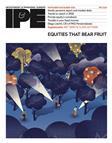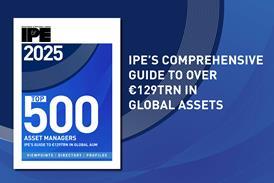Corporate pension funds in Germany are strengthening their allocations to fixed income as they seek to meet long-term return targets and mitigate downside risks in their investment portfolios.
“Mandates with active duration and credit risk management, in particular, enable robust risk mitigation against volatile equity markets,” said Christopher Schaumlöffel, director investments, head of continental European portfolio management, at WTW.
According to Schaumlöffel, the trend reflects a renewed emphasis by corporate pension funds on insulating portfolios from economic and geopolitical shocks.
He added that WTW is observing an increase in fixed income allocations, partly in response to a continued, albeit slight, decline in money market interest rates.
Bayer Pensionskasse
Bayer Pensionskasse committed an additional €200m to fixed income last year, building on the €950m allocated in 2023.
The €9.85bn pension fund has made slight adjustments to its strategic asset allocation following an asset/liability management (ALM) study, marginally increasing its fixed income exposure at the expense of riskier assets or liquidity, according to its 2024 financial statement.
The fund aims to keep the weight of fixed income broadly aligned with ALM targets.
While buffers built up in 2023 and 2024 offer protection, the fund noted that its equity holdings leave it exposed to potential setbacks in stock markets resulting from further escalation of the conflict in Ukraine, trade tensions or other geopolitical crises.
All equity mandates were fully hedged in the final days of December to lock in gains achieved over the year.
BASF Pensionskasse
BASF Pensionskasse, with €10bn in assets, invested €490m in bond funds during the 2024 financial year.
The chemical group’s pension vehicle restructured its bond portfolio by reducing allocations to European and emerging market debt by 3.6 and 1.0 percentage points, respectively, while increasing global bond exposure by 4.6 percentage points, its latest financial statement showed.
The fund also adjusted its equity strategy, increasing allocations to European and emerging market equities by 1.9 and 0.4 percentage points, respectively, while trimming global equities by 2.3 percentage points.
Going for private markets but avoiding the US
“The US market remains an anchor in most equity portfolios [of corporate pension funds] due to its growth potential, despite high valuations. Nevertheless, we are seeing some selective geographical reallocations to Europe, particularly driven by valuation,” Schaumlöffel noted.
He added that funds are not engaging in wholesale reallocations or significantly underweighting US assets.
Meanwhile, German corporate pension investors continue to increase their allocations to private markets, drawn by the potential for improved risk-adjusted returns and greater diversification from listed equities.
“Private equity and infrastructure are in focus, the latter particularly due to the recent amendment to the investment rules, which significantly facilitates direct investments in infrastructure projects,” said Schaumlöffel.
In February, a new infrastructure allocation investment rule was introduced for German pension funds, allowing the asset owners to invest up to 5% of total assets in infrastructure as a separate asset class.
Private debt, by contrast, is currently less in focus due to already high bond allocations, although the asset class continues to prove its value in niche segments such as NAV lending and consumer credit, he added.
The latest digital edition of IPE’s magazine is now available

























No comments yet